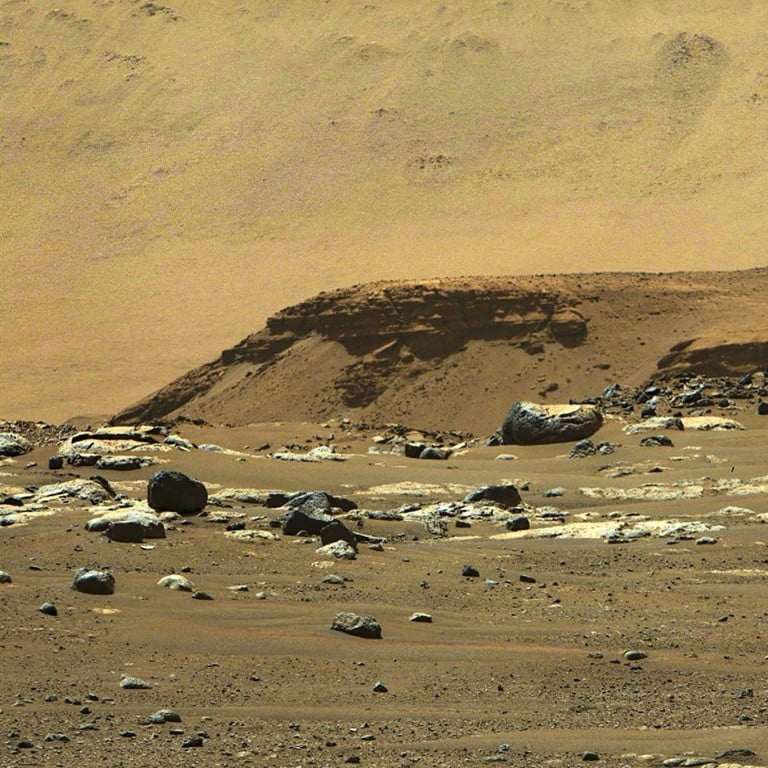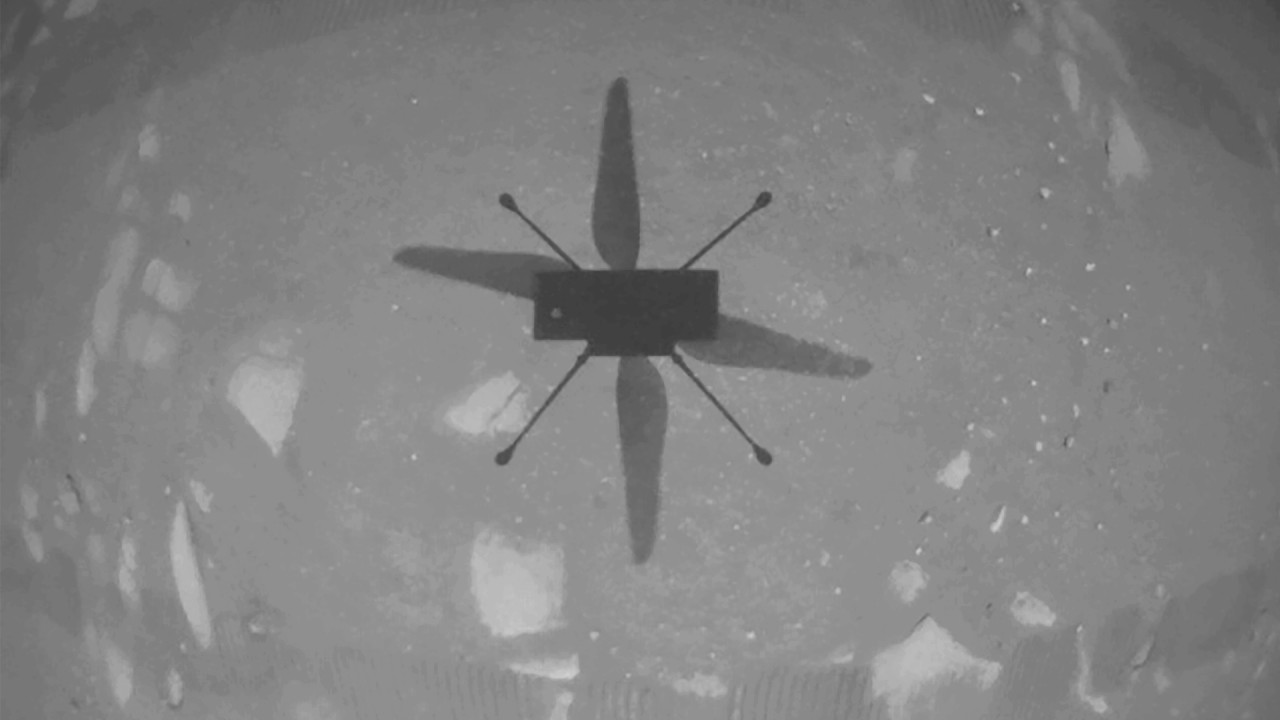
Fungi on Mars? Researchers claim signs of life on red planet
- Analysis of photos taken on the fourth rock from the sun reveals forms that seem to emerge from the soil and expand
- But critics dismiss the findings, saying conditions are too extreme and changes on the surface can be explained
But other researchers said the evidence was speculative and far from enough to support the conclusion.
In a paper accepted for publication in the journal Advances in Microbiology, the 11 researchers from various countries and institutions said an analysis of photos taken by previous Mars missions showed “white amorphous specimens within a crevice change shape and location then disappear” within three days.
There were also signs of thousands of black spider-like forms that grew up to 300 metres in the spring and disappeared by winter.
They said the pattern was “repeated each spring and ... may represent massive colonies of black fungi, mould, lichens, algae, methanogens and sulphur-reducing species. Black fungi-bacteria-like specimens also appeared atop the rovers.”
“Growth, movement, and changes in shape and location constitute behaviour and support the hypothesis there is life on Mars,” said the authors, who include scientists from the Harvard-Smithsonian Centre for Astrophysics in the United States and Aston University in Britain.
One of the authors of the paper, Wei Xinli from the State Key Laboratory of Mycology at the Institute of Microbiology under the Chinese Academy of Sciences in Beijing, declined to be interviewed, but said the paper was only “conjecture instead of results based on tangible examination of samples”.
Zoey Yang, the journal’s managing editor, said the paper had undergone double-blinded peer review after it was submitted on April 21.
“After peer review, it was accepted with revisions as we received four review results from different reviewers. They all suggest that we accept it after some revisions,” she said, adding that more reviewers would be invited to share comments following the criticism.
China names its Mars rover Zhu Rong after mythical god of war
But Jonathan Clarke, president of Mars Society Australia, who was not involved in the paper, said the research was speculative and the presented evidence was far from enough to support claims that there was life on Mars.
“The evidence to me as a geologist who studies Mars and Mars analogues in extreme environments on Earth that resemble conditions on Mars, the fungal explanation doesn’t really make sense,” Clarke said. “The conditions on Mars are so extreme that you’re not going to see fungi or any kind of life growing at that sort of speed under conditions like coldness and low air pressure. Life can barely survive, let alone thrive.”
Clarke said the spheres described in the paper as having the growth characteristics of living organisms were concretions that looked like round balls.
He said they were about the size of peppercorns and made of hematite, a red iron mineral. When the rock eroded away, little hard balls were left behind.
“It’s just like if you go to a beach and there are shells. If the wind blows, the sand moves and exposes more shells. But we won’t say the shells are growing there, it’s just that they become visible,” Clarke said.
He added that Martian soil contained very little organic matter for fungi to grow. “There’s nothing there for them to feed on. It’s like expecting to see a lush garden suddenly growing in a desert almost overnight.”

01:54
Nasa’s Ingenuity helicopter makes historic first flight on Mars
David Flannery, lecturer of Earth and planetary sciences at the Queensland University of Technology and a member of the Nasa Mars 2020 mission science team, said he hoped the study would not discredit ongoing space missions, which had returned “zero evidence of living organisms”.
“We’re looking for life on Mars right now. But we’re looking in the rock record and for fossilised evidence of life because the surface is not habitable for life,” Flannery said.
“The reason for that is the soil is toxic. The surface is bathed in deadly radiation all the time. Liquid water can’t persist there. So it’s really not the sort of place we would expect to find living organisms.”
US and China exchange data on their Mars missions
He also said other materials should be used alongside photos to interpret available data from Mars.
“We have more than photos, records, instruments that tell us what these materials are made of. And we have models for the features we see around us.
“Robots are sending back huge amounts of data. We have plenty of information but it’s just that no one is interpreting the features that we see as something like fungi. There’s zero evidence for that. This paper, which is really not credible, will be ignored by the scientific community.”
Bringing back samples from Mars for examination would be the next big challenge in deep space exploration, according to Flannery.
“The mission that I work on is the first in a series of missions that will end up bringing samples back. That’s going to cost many billions of dollars and it’s technically very challenging,” he said. “We’re looking at least 10 years down the road.”

